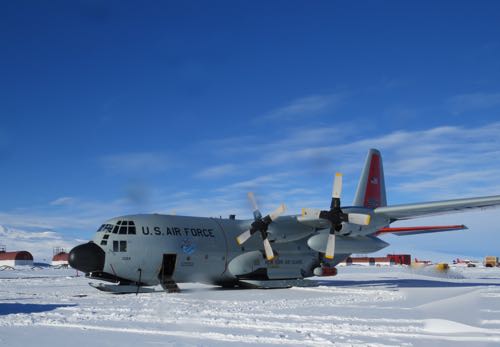 The Rosetta Icepod flights are aboard US Air Force LC-130 planes. They have a few more windows than a C-17 and also have skis for landing on ice and are quite a bit smaller, but serve our purposes just fine!
The Rosetta Icepod flights are aboard US Air Force LC-130 planes. They have a few more windows than a C-17 and also have skis for landing on ice and are quite a bit smaller, but serve our purposes just fine!
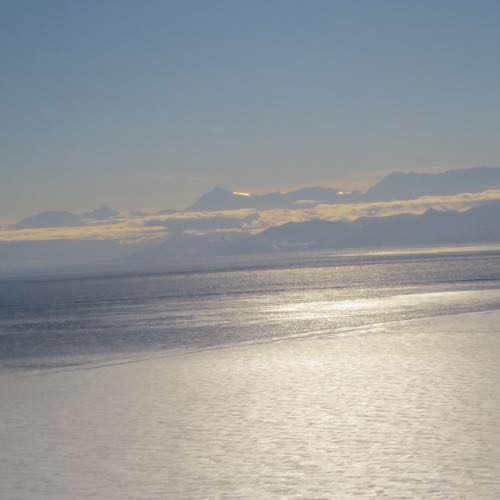 A first glimpse of the water meeting the ice.
A first glimpse of the water meeting the ice.
Flying over the ice, another truly magnificent experience. Last night, we departed Williams Field at about 9pm and headed out on our first Rosetta Icepod flight. The weather finally cleared and all instrumentation was ready to go. I didn't know what to expect or how much I'd see, if anything. I am so thankful (it is my word of the week, in honor of Thanksgiving) to have been able to go on this flight. The views were mesmerizing. My camera struggled to capture great images through the LC-130's windows, but, what it did take is still beautiful. I will not write much today as the pictures will tell the story, but suffice it to say, when the ice and water meet, it is a tremendous sight. We may have the opportunity to do one more flight tonight if the weather holds out. I am keeping my fingers crossed despite another early morning bedtime. The views are worth the sleepless night!
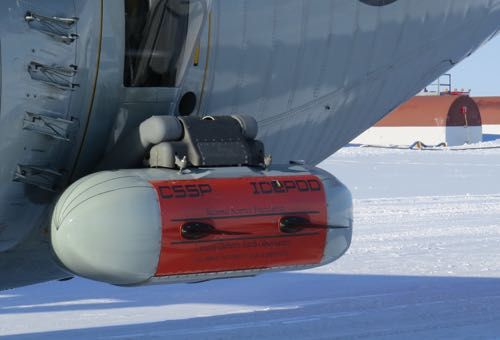 The Icepod Lidar and other instrumentation are attached to the underside of the plane.
The Icepod Lidar and other instrumentation are attached to the underside of the plane.
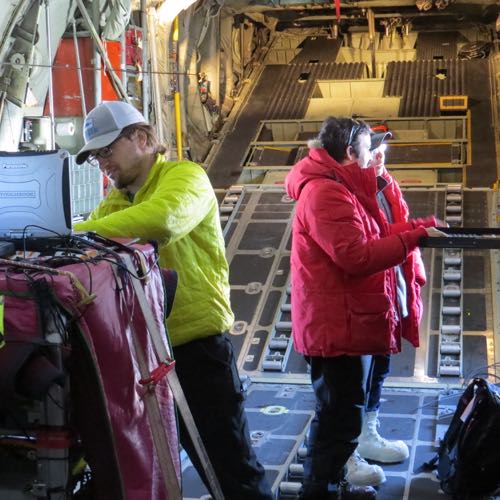 Inside the LC-130, the computers are being readied for our trip. There are about seven monitors in total running various information.
Inside the LC-130, the computers are being readied for our trip. There are about seven monitors in total running various information.
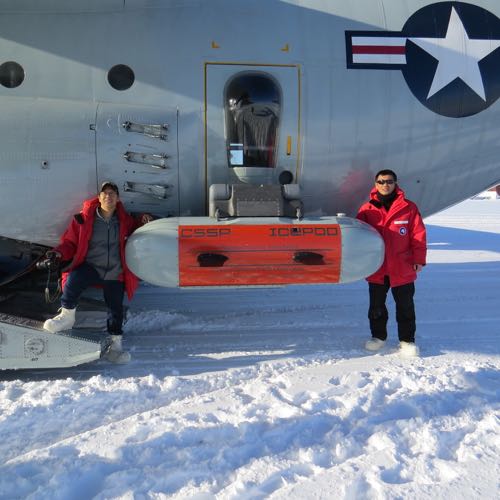 Hongjie and Yongli pose in front of the plane before takeoff.
Hongjie and Yongli pose in front of the plane before takeoff.
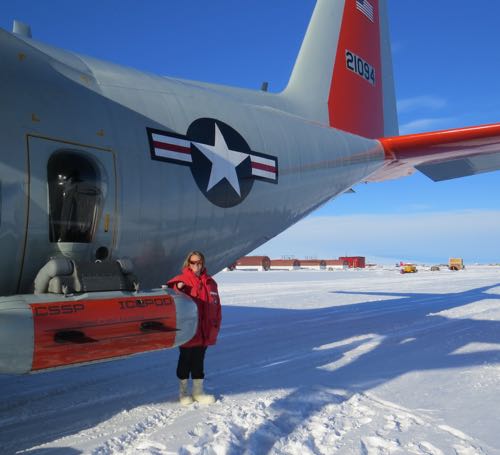 I am here too. Wish I wasn't wearing those boots though! Yongli took this pic for me.
I am here too. Wish I wasn't wearing those boots though! Yongli took this pic for me.
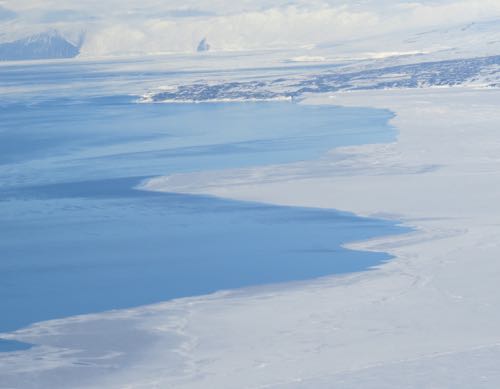 This view takes us in a little closer to the water's edge. It really is this beautiful blue color.
This view takes us in a little closer to the water's edge. It really is this beautiful blue color.
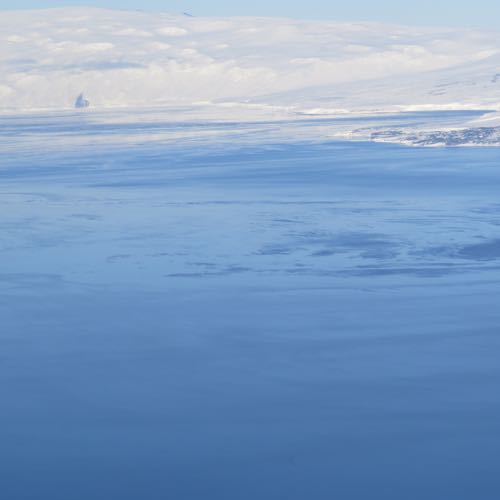 Glaciers flow into the ocean. We are flying about 750 meters above the sea but later we will go down to about 380 meters to avoid the cloud cover.
Glaciers flow into the ocean. We are flying about 750 meters above the sea but later we will go down to about 380 meters to avoid the cloud cover.
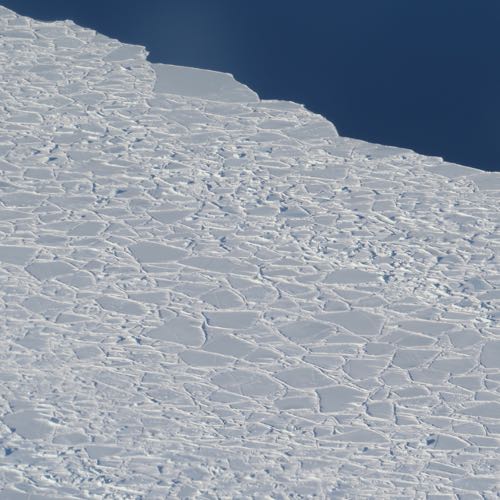 The ice appears very scaly due to being broken and 'seamed' back together from tidal/wave action of the ocean.
The ice appears very scaly due to being broken and 'seamed' back together from tidal/wave action of the ocean.
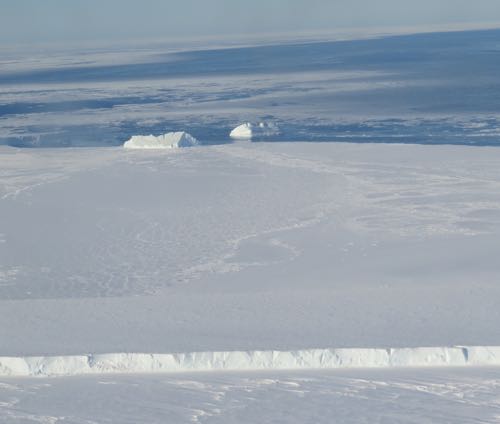 Some ice has already calved and are now icebergs in the ocean.
Some ice has already calved and are now icebergs in the ocean.
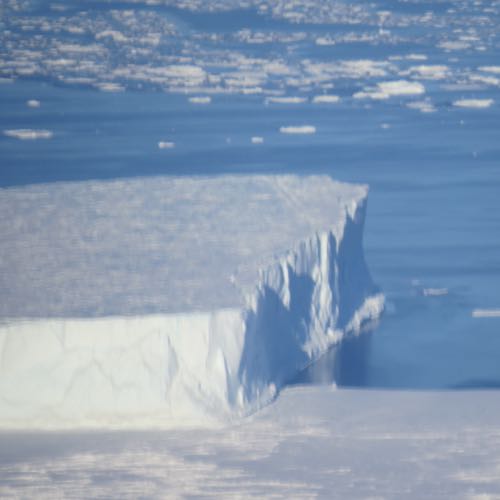 We are guessing that this thickness is about 12-20m with another 100-180m under the water.
We are guessing that this thickness is about 12-20m with another 100-180m under the water.
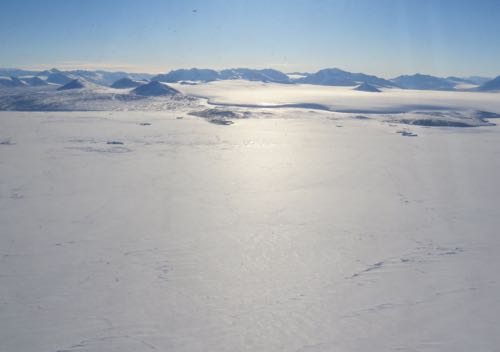 Glacier toungue coming out towards the sea. The mountains in the background are part of the Dry Valleys.
Glacier toungue coming out towards the sea. The mountains in the background are part of the Dry Valleys.
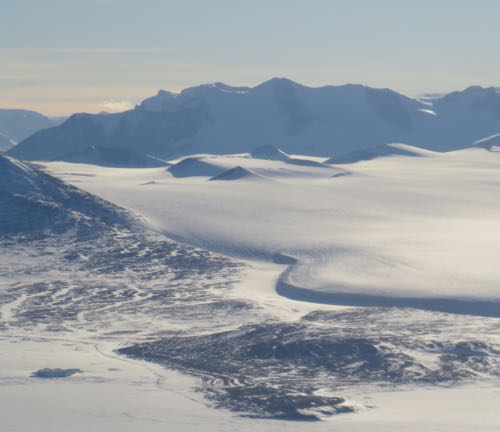 Close-up of the glacier flow from the Dry Valley Mountains.
Close-up of the glacier flow from the Dry Valley Mountains.
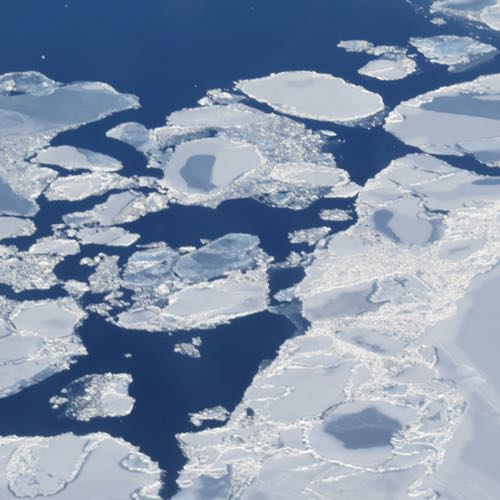 Pack ice is already broken off the fast ice. Melt pools are forming on the top of some of the pieces.
Pack ice is already broken off the fast ice. Melt pools are forming on the top of some of the pieces.
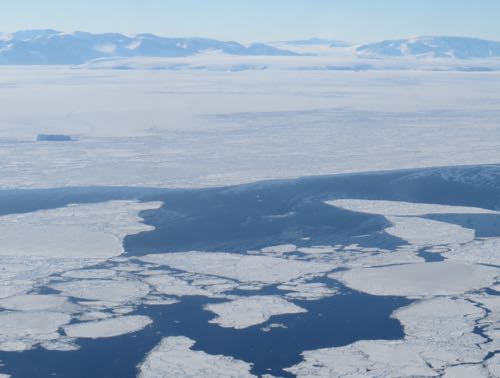 Another look at the glacier flowing out of the Dry Valleys.
Another look at the glacier flowing out of the Dry Valleys.
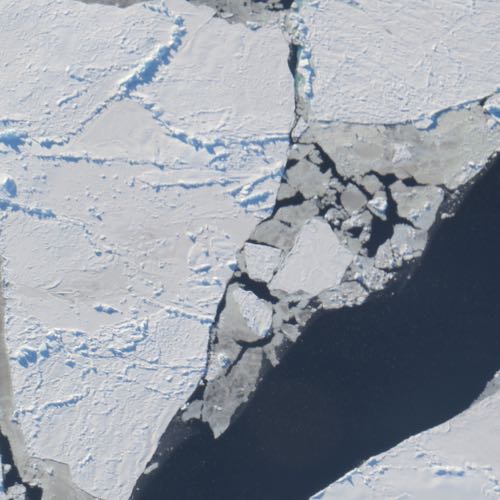 More pack ice with some cool seaming.
More pack ice with some cool seaming.
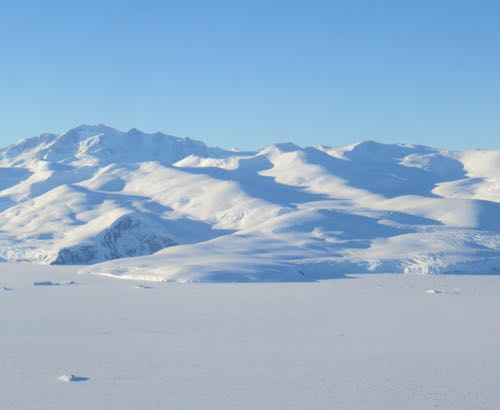 This reminded me of the House of Xanadu, a WI Dells feature that burned down many years ago. The snow looks so smooth.
This reminded me of the House of Xanadu, a WI Dells feature that burned down many years ago. The snow looks so smooth.
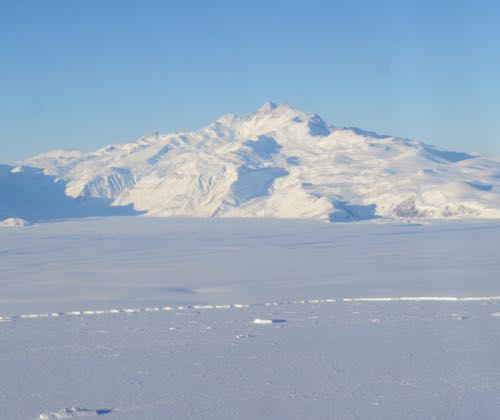 This mountain was pretty to look at and shows a glacier tongue as well.
This mountain was pretty to look at and shows a glacier tongue as well.
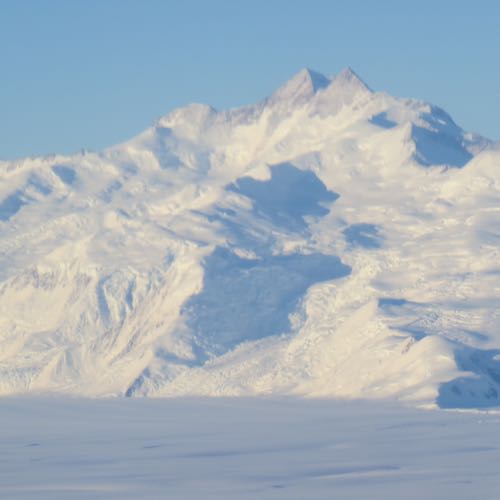 A nice close-up of the mountain.
A nice close-up of the mountain.
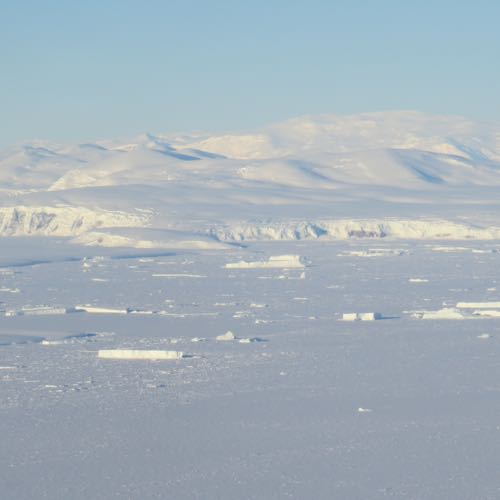 You can distinctly make out the glacier front in this photo.
You can distinctly make out the glacier front in this photo.
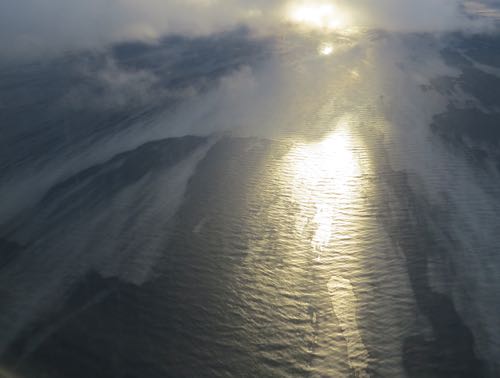 Cloud cover starts to move in. The water has some thin ice here or there in spots along this route.
Cloud cover starts to move in. The water has some thin ice here or there in spots along this route.
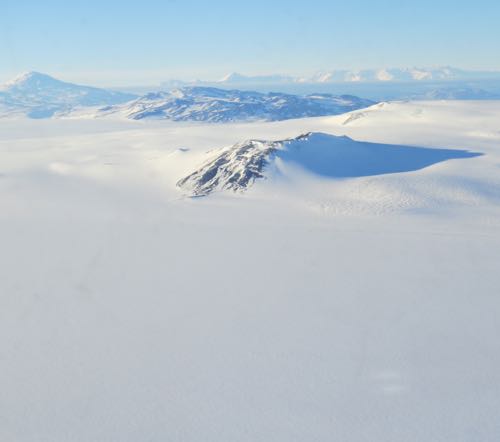 A final image from our flight. A pretty fantastic way to spend an evening and early morning! This photo was taken at about 2am!
A final image from our flight. A pretty fantastic way to spend an evening and early morning! This photo was taken at about 2am!
My final Lorax is posting today as well. This one, for Stacy, a great friend and teacher at Cedarburg High School!
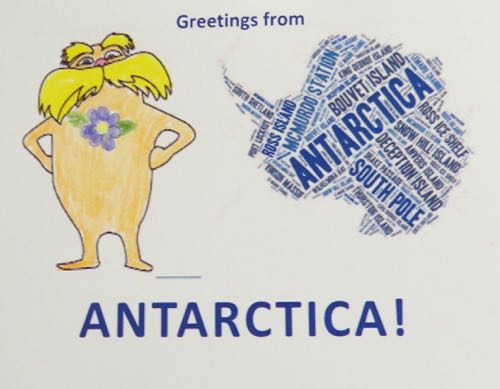 The last of the Flat Lorax Cards! This one is for Stacy at Cedarburg High School!
The last of the Flat Lorax Cards! This one is for Stacy at Cedarburg High School!

Add new comment